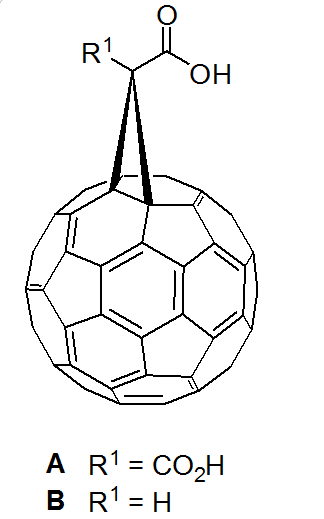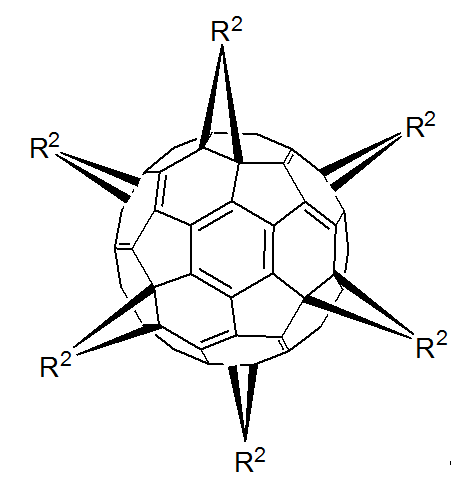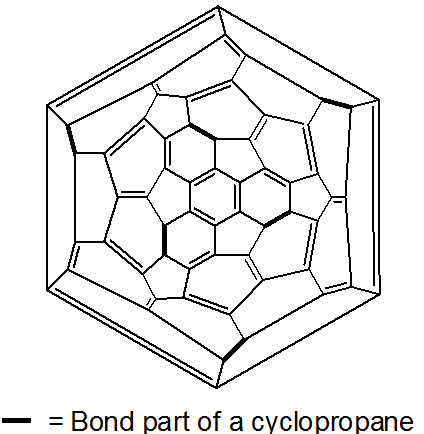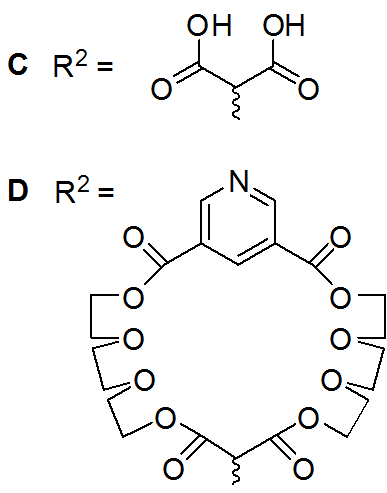C1.6: Syntheses and Applications of New Nano-Structured Materials
Subproject Leader:
Stefan Bräse
Institut für Organische Chemie, KIT
Peter Roesky
Institut für Anorganische Chemie, KIT
Contributing Scientists:
Present: Matthias Schmid, Carmen Cardenal Pac, Daniel Fürniß, Dominik Kölmel, Sidonie Vollrath, Dr. Birgit Rudat
Novel Chiral Lanthanide–C60 Buckminster Fullerene Clusters
This project focuses on the development of novel coordination compounds comprising lanthanides and C60 fullerene adducts and deals with their physical and chemical applications. This project has by now be re-integrated into project C1 and C5 and further details can be found under C5.2.
These novel nano-structured clusters shall disclose intriguing properties because lanthanide complexes exhibit fundamentally different optical and magnetic properties compared to transition metal clusters. Besides, C60 fullerenes offer very flexible addition types. This offers several coordination possibilities engendering manifold structural motives. Moreover, the fullerene core features remarkable opto-electronic properties. Its capacity of accepting up to six electrons leads to widespread scopes of application as Organic Light Emitting Diodes (OLEDs) and Organic Photovoltaics (OPs). Bearing these considerations in mind, attaching lanthanides to fullerenes should facilitate the formation of versatile coordination compounds with exciting new properties.
In order to prepare these coordination compounds, fullerene mono-adducts bearing at least one carboxylic acid as binding site for the lanthanide shall serve as starting materials (Figure 1). These molecules will partially or completely replace the ligands of given lanthanide complexes and thus generate the desired coordination compounds. Binding sites of the fullerene are not limited to acids, as other functional groups like amides or pyridines can also get involved. One important issue is the ease by which these rare earth clusters should be obtained as single diastereomers, either by employing enantiomerically pure fullerene derivatives and/or enantiomerically pure co-ligands. Indeed, the synthesis of chiral clusters is crucial for several applications, namely the domain of asymmetric catalysis. All along this project, every prepared complex will be fully characterized and its magnetic and opto-electronic properties will be investigated. Studies focusing on the evaluation of their aptitude to act as homogenous catalysts will be carried out as well. The outcome of these studies will help to optimize the design of these structures within a close to real time scale.
The group of Prof. Bräse is interested in the synthesis of different fullerene adducts and in their use as molecular building blocks for supramolecular architectures (cf. CFN project C5.2).[5] They have a profound knowledge in preparing various fullerene adducts via the so-called Bingel reaction which is to date the only method to obtain stable fullerene hexakis-adducts. Based on the preliminary works, it will be of special interest to research the aptitude of the lanthanide complexes in mediating the catalysis of asymmetric organic reactions.
One expertise of the group of Prof. Roesky lies in the field of coordination chemistry of s-, d, and f-block metals. One of the long term research fields is the coordination chemistry of lanthanides, as well as their physical and chemical properties. The application of lanthanide compounds in material sciences and organometallic chemistry depicts another crucial point in the research of the Roesky group. The Roesky group will be in charge of the complex synthesis, crystallization and full characterization. Moreover, they will direct all the physicochemical investigations on the novel materials in order to determine their magnetic and optical characteristics.
The combination of asymmetric ligand design, especially in fullerene chemistry, and coordination chemistry of lanthanides will lead to the generation of a series of novel coordination compounds bearing exciting new properties
References:
[1] P. W. Roesky, G. Canseco-Melchor, and A. Zulys, A Pentanuclear Yttrium Hydroxo Cluster as an Oxidation Catalyst. – Catalytic Oxidation of Aldehydes in the presence of air, Chem. Commun., 738 (2004)
[2] V. Baskar, P. W. Roesky, Lanthanide Oxygen Cubane Clusters Anchoring Ferrocenes: Model Compounds for Fixation of Organometallic Fragments on a Lanthanide Oxide Surface, Dalton Trans., 676 (2006)
[3] S. Datta, V. Baskar, H. Li, and P. W. Roesky, Synthesis and Structural Characterization of Tetra- and Pentanuclear Lanthanide Hydroxido Clusters, Eur. J. Org. Chem., 4216 (2007)
[4] M. T. Gamer, Y. Lan, P. W. Roesky, A. K. Powell, and R. Clérac, Pentanuclear Dysprosium Hydroxy Cluster Showing Single-Molecule-Magnet Behavior, Inorg. Chem.45, 6581 (2008)
[5] P. Pierrat, C. Réthoré, T. Muller, and S. Bräse, Design and Efficient Synthesis of Fullerene Bismalonates as Building Blocks for Metal Organic Frameworks, Synlett, 1706 (2008)
[6] S. Bräse, and S. Höfener, Asymmetric conjugate addition of organozinc compounds to a,b-unsaturated aldehydes and ketones with [2.2]paracyclophaneketimine ligands without added copper salts, Angew. Chem. Int. Ed. 44, 7879 (2005)
List of Publications 2006-2011 as PDF
Subproject Report 2006-2010 as PDF



